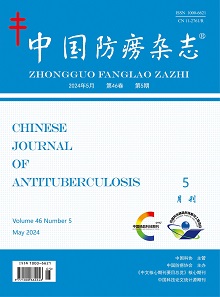Objective To understand the willingness of anti-tuberculosis treatment and explore the influence of health education on the rate of anti-tuberculosis treatment among tuberculosis cases diagnosed by active finding.
Methods Using a cross-sectional study method, 149 cases of tuberculosis patients found in the active screening program for tuberculosis were selected in one of the five provinces (or autonomous regions) with the highest tuberculosis incidence in Qinghai, Guizhou, Guangxi, Tibet, and Xinjiang from September to December in 2017. A 10-minute health education was conducted after the diagnosis, and a face-to-face interview questionnaire was conducted before and after the health education intervention. The questionnaire survey included personal basic information, family income, medical expenses, transportation costs to the designated hospital, treatment intention after diagnosis and after ten minutes’ health education, and the reasons not willing to accept treatment. Before and after intervention, 149 questionnaires were both sent out and 149 questionnaires were returned with 149 valid questionnaires. The treatment rate before and after health education were analyzed. Univariate analysis and multivariate logistic regression analysis were used to analyze the factors influencing the treatment willing of patients after health education.
Results After health education, the rate of willing to receive treatment was raised from 78.52% (117/149) to 85.23% (127/149).After 10-minutes health education, the results of univariate analysis showed that compared with Guizhou (0, 0/39), the tuberculosis patients from Qinghai (29.41%, 10/34), Guangxi (26.09%, 6/23) and Xinjiang (15.62%, 5/32) were more reluctant to be treated (
χ 2=18.13,
P<0.001). Compared with patients younger than 65 years old (2.44%, 1/41), patients older than 65 years old (19.44%, 21/108) had less willing to be treated (
χ 2=6.83,
P=0.009). Compared with patients who had been going back and forth to the designated hospital for less than 30 minutes (8.43%, 7/83), patients who had been going back and forth for more than 30 minutes (22.73%, 15/66) had a higher rate of unwilling to be treated (
χ 2=5.97,
P=0.015). The multivariate analysis showed that the rates of unwillingness to be treated among cases ≥65 years (
OR=10.18, 95%
CI: 1.31-79.38;
Wald χ 2=4.91,
P=0.030) and cases who take more than 30 minutes from home to hospital (
OR=3.36, 95%
CI:1.25-9.02;
Wald χ 2=5.78,
P=0.020) were significantly higher.
Conclusion Health education can improve the rate of willing to receive treatment. The effect of village doctors’ home education is more obvious. Patients over 65 years old and far from designated hospitals should be paid more attention.

 Wechat
Wechat